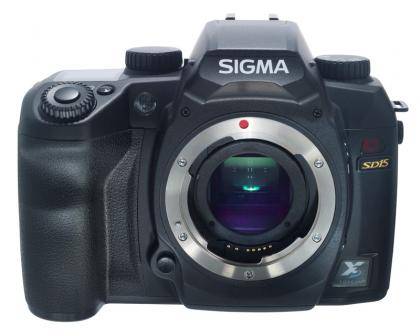Sigma’s SD15 is only the company’s fourth digital SLR since 2002 when it introduced the SD9 and was first announced almost two years ago at Photokina 2008. It was since delayed and has only recently made it onto retailers’ shelves.
At just under £800 body only, the SD15 is aimed at keen amateurs who are looking to get a bit more serious about their photography. Its highlight is the unique Foveon X3 sensor, which is the same as the one in the Sigma DP2s we reviewed recently.
It’s an 20.7x13.8mm APS-C sized sensor similar to the size of the sensors in mid-range and entry-level DSLRs, but unlike conventional CCD or CMOS sensors used in almost every digital camera that isn’t made by Sigma, the Foveon X3 captures full RGB colour in every photocell on the sensor. Conventional sensors can capture only one primary colour per photocell and employ a Bayer Mask Filter to estimate RGB values for each photocell. The X3 achieves this by using three receptors stacked on top of each other at different depths that correspond to the frequency of the light – one each for Red, Green and Blue.

This unfortunately does come at a cost as the SD15’s images have a measly resolution of 2,640x1,760 pixels. It equates to roughly 4.7 megapixels, which is much lower than a typical DSLR’s resolution, but the Foveon X3 records three times as much data which means it’s producing the same amount of depth and detail as a 14.1 megapixel sensor.
The SD15 feels strong and fits comfortably into your hand thanks to the large textured hand grip, but some of the controls are slightly unconventional if you’re used to a Canon or Nikon system. There is a pair of dials on the top which control the drive mode (left) and shooting mode (right) – the left hand dial also doubles as the power switch.
The shooting mode dial is quite empty with only PASM controls (program, aperture priority, shutter priority and manual) – there are no fancy intelligent auto or scene modes that are normally found on DSLRs of a similar price. More unusual is the command dial’s location: it surrounds the shutter button which at first felt a little strange, but it was easy to get used to and quickly change settings.

